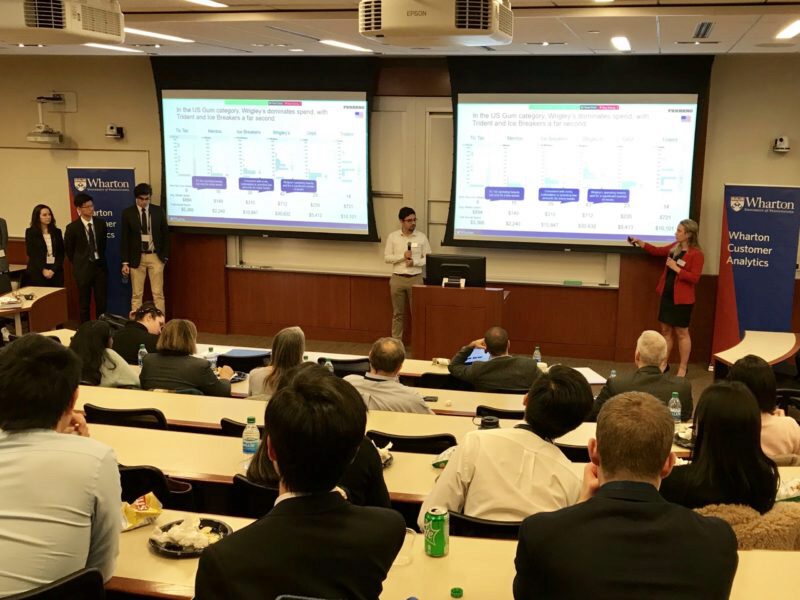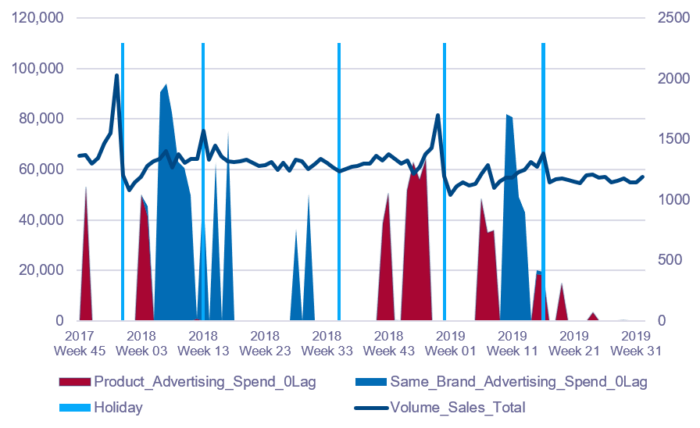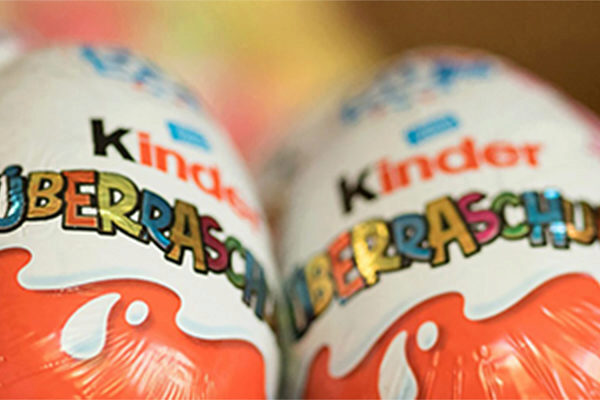Sweet Solutions to Advertising Questions

About the Analytics Accelerator
Every fall and spring semester, Analytics at Wharton hosts the Analytics Accelerator, an experiential learning program that pairs students with a company to solve a real-world business problem using the company’s actual datasets and the latest techniques including machine learning and AI.
Through a competitive application process, six students were selected to work on Ferrero’s Accelerator project. This multidisciplinary team was comprised of undergraduate and graduate students from Wharton, Penn Engineering, and the School of Arts and Sciences.
Under the guidance of their Wharton mentor, the team had six weeks to analyze Ferrero’s data and create a marketing mix model that would evaluate the effectiveness of Fererro’s advertising within their brand portfolios. The team presented their findings to company executives at the Analytics Accelerator Summit.
Objective
The primary objective was to study the intra-brand sales lift from television spend within a portfolio. For example, if you promote Tic Tac Gum on TV, will Tic Tac Mint benefit from a marketing halo effect and see a sales increase as well?
In order to meet this objective, the student team was tasked with analyzing aggregated retailer data (e.g., Information Resources (IRI) and advertising spend data). The challenge to the team also included creating an implementable solution that would help the company better allocate their media budgets globally. Ferrero wanted to determine the halo effects, if any, from the master brands to the “children.”
“What I was most pleased to see from the outcome was that despite the different sizes of our portfolios and the heritage in each of the different markets, there was commonality to the models that could be run on a central level.”
Erin Breland
Head of Global Business Intelligence and Analytics at Ferrero
Approach
Given the breadth of Ferrero’s global markets and product offerings, the team narrowed their focus to Tic Tac and Kinder sales in four major markets – Italy, Germany, UK, and US.
First, they cleaned the data in Python and merged the two data sources, categorizing the information by country and by week. Next, the team used R to run their analyses. The project called for a marketing mix (multiple regression) model. To create the multi-brand/multi-country model, the team ran regressions in R with various sets of features (e.g., advertising spend and promotions of the focal product and others in the portfolio) against each of the product sales datasets within a single country to explore the marketing “halo” dependencies. For example, there are approximately 14 Kinder products sold in Italy; therefore, the team required 14 separate demand models and examined the coefficients in each of the outputs to determine the extent of the halo effect.
Solution
In their analysis, the team found that the brand halo effect varied in all four markets and across every brand/product combination. In particular, the team noted that the overall strong halo effect of Kinder was very different in each market.
For example, in the United States, advertising for Tic Tac Mint and Tic Tac Gum have a positive impact on both own sales and cross sales (See Figure 1). This is likely because of the strong Tic Tac brand recognition in the U.S. In Italy, however, Mint advertising has a detrimental impact on category Gum sales, and Gum advertising does not statistically impact Mint sales.
Overall, the team recommended A-B testing (outside of the holiday season), to further understand the causal relationship of advertising spend on sales while focusing on advertising a single product or a combination of products.

Impact
Ferrero intends to test the team’s solutions over the next year. The company is ramping up an analytics outsourcing hub, which will take the team’s code and replicate the analysis across markets and products within the larger Ferrero portfolio.
“What I was most pleased to see from the outcome was that despite the different sizes of our portfolios and the heritage in each of the different markets, there was commonality to the models that could be run on a central level,” said Erin Breland, the head of global business intelligence and analytics at Ferrero’s headquarters in Luxembourg.
Related Articles

Students Offer Sweet Solutions to Data Problems at the Analytics Accelerator Challenge
How strong is the halo effect when it comes to selling candy and gum? This was among the many questions students set out to answer during the third annual Wharton Analytics Accelerator.
Read more >>

Students Analyze Ferrero’s Advertising Spend Data to Help Improve ROI
Nikki Bowser, WG’21, and Erin Breland, head of global business intelligence and analytics at Ferrero, discuss the Wharton Analytics Accelerator project Nikki’s student team pursued. The students looked at Ferrero’s TV product advertising across all markets to see if they could improve ROI.
Listen >>


